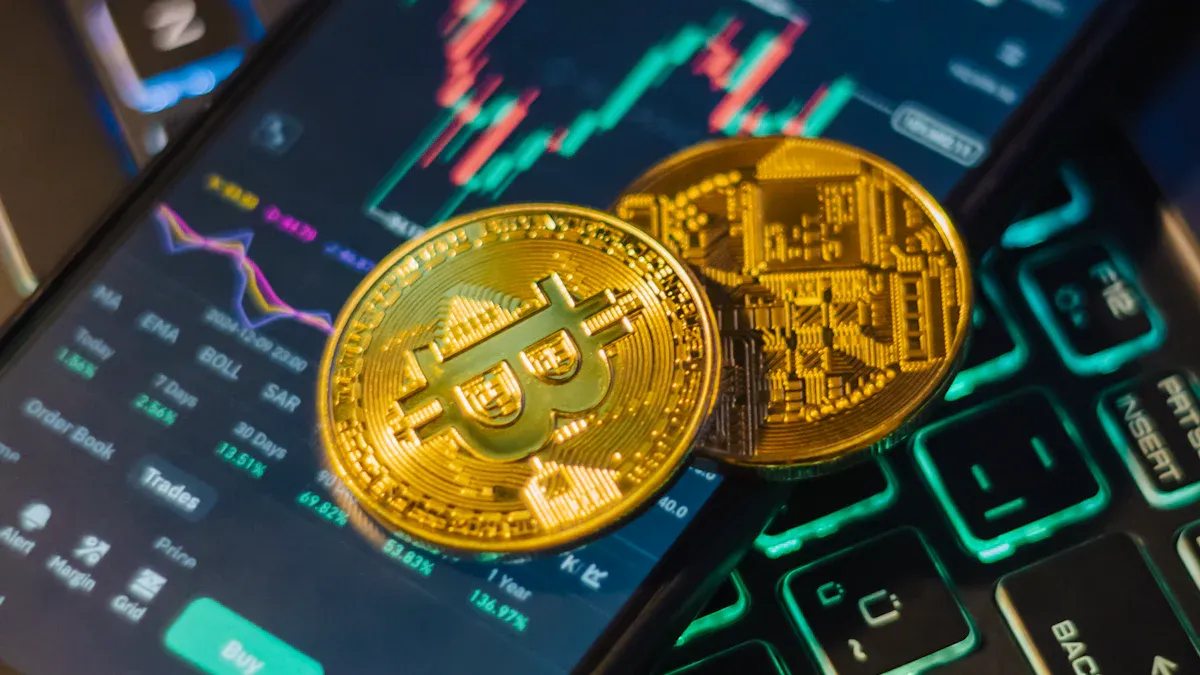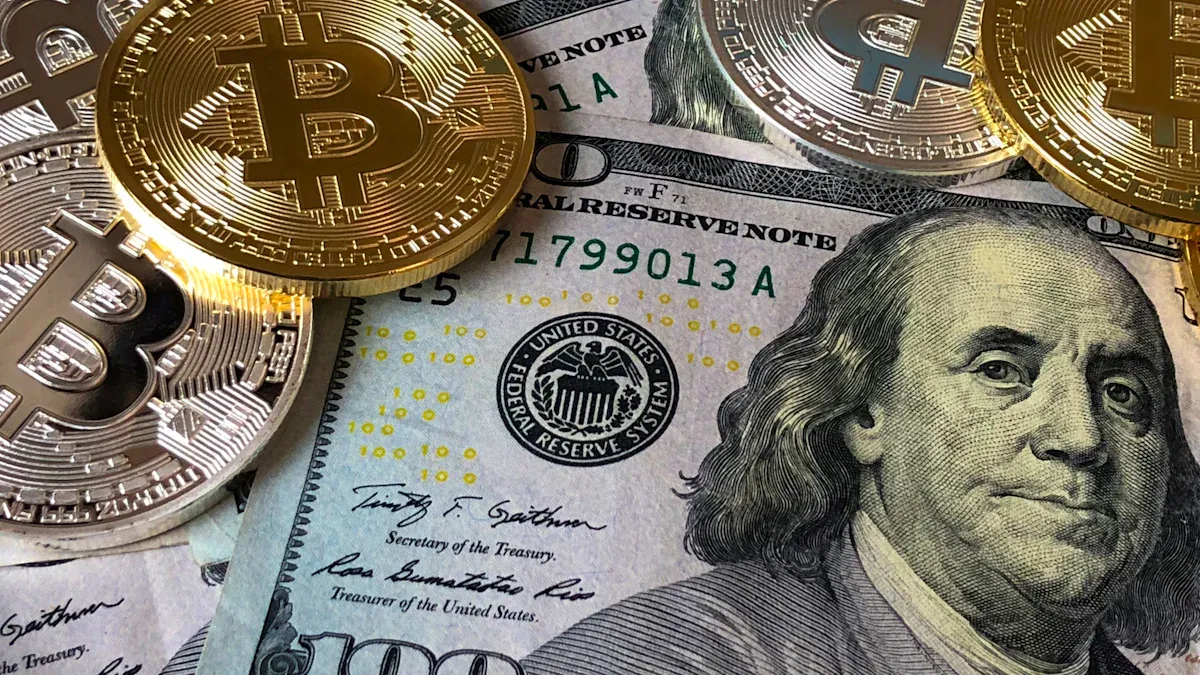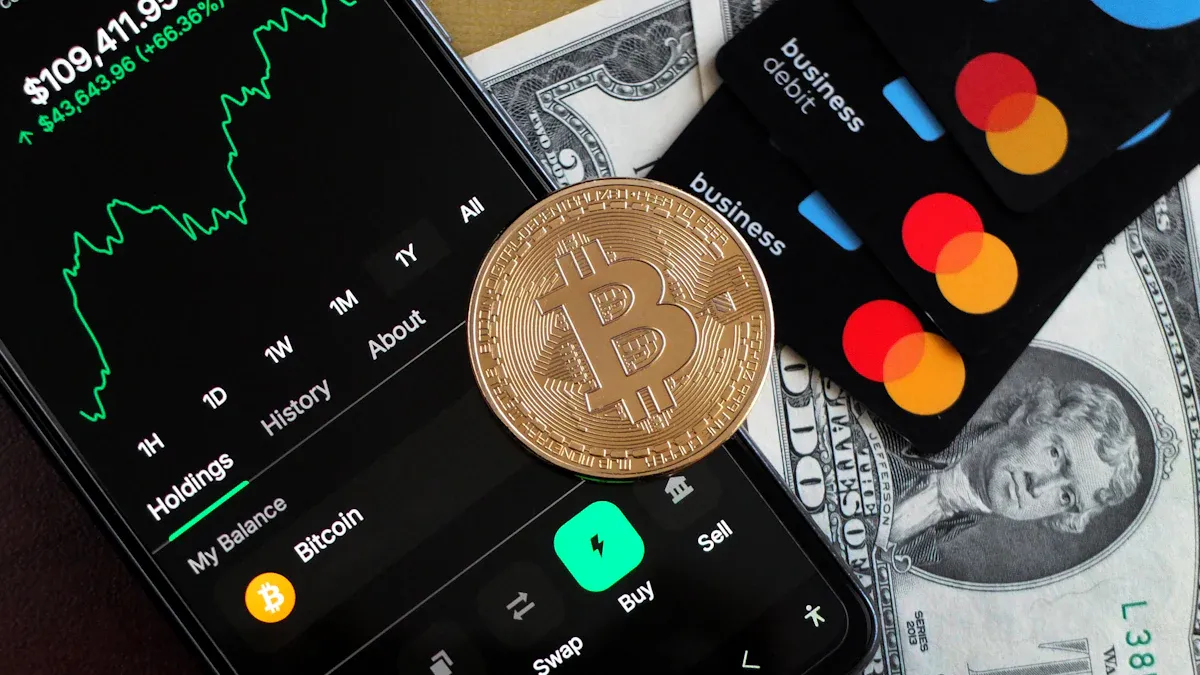- EasyCard
- Trade
- Help
- Announcement
- Academy
- SWIFT Code
- Iban Number
- Referral
- Customer Service
- Blog
- Creator
How to Use Stablecoins for Cross-Border Transfers: A Comprehensive Operational Handbook

Image Source: pexels
Every year, more than $800 billion in funds flows cross-border globally. However, traditional bank remittances not only may take several days, but the fee per transaction often exceeds $40. Stablecoin transfers provide a brand-new solution, with the core being bypassing bank intermediaries to achieve point-to-point value transfer.
The entire process can be summarized as: “Fiat deposit → exchange for stablecoins → on-chain transfer → stablecoin withdrawal”.
This article is a complete beginner-oriented guide to using stablecoins, aimed at helping you complete cross-border remittances safely and at low cost.
Key Takeaways
- Stablecoin transfers are faster and cheaper than traditional bank remittances, completing global transfers in one minute with fees below 1%.
- Using stablecoins for cross-border transfers involves five simple steps: register a platform, complete identity verification, purchase stablecoins, execute on-chain transfers, and finally exchange for fiat currency.
- Choosing the right stablecoin (such as USDC or USDT) and blockchain network (such as TRC20) is important, as they affect transfer speed and fees.
- When transferring, be sure to carefully verify the recipient address and network, because once a blockchain transaction is sent, it cannot be revoked, and errors will lead to permanent loss of funds.
- Understanding the costs, risks, and regulatory requirements of various countries for stablecoins can help you use stablecoins safely for cross-border payments.
Stablecoin Transfers: The Next-Generation Cross-Border Payment Solution

Image Source: pexels
Compared to traditional banks, stablecoins provide you with a more modern and efficient cross-border payment option. It can become a next-generation solution mainly due to the following four core advantages.
Ultimate Cost-Effectiveness
The high costs of traditional wire transfers can significantly reduce the amount ultimately received by the recipient’s family. The fees for a single transaction, intermediary bank charges, and currency exchange spreads can add up to costs as high as 4.8% or more of the total amount. Stablecoin transfers reduce this cost to below 1%.
Tip: The core cost of stablecoin transfers lies in the fiat “deposit” and “withdrawal” links, while the on-chain transfer fee itself is extremely low.
To give you a more intuitive understanding of the cost differences, see the fee comparison chart below for transferring $10,000 USD:
Minute-Level Global Arrival
Have you experienced the anxiety of waiting several business days for funds to arrive? Traditional SWIFT remittances need to go through clearing and reconciliation by multiple intermediary banks, so they usually take 1-5 business days. Stablecoin transfers completely bypass this complex system. They perform point-to-point settlement on the blockchain, and funds can reach recipients anywhere in the world within minutes, operating 24/7.
Simplified Operation Process
Forget the tedious process of filling out complex forms and going to the bank. To use stablecoins for cross-border transfers, you only need a device with internet access. This complete guide to stablecoins will show you that the entire process requires just a few simple online steps, as easy as sending an email.
Empowering Individuals and Businesses
Stablecoins not only serve personal remittances but are also injecting new vitality into global business activities. For example, payment giant Stripe already allows businesses to use USDC for instant settlements with global suppliers. Data shows that the annual settlement volume of the stablecoin market has exceeded trillions of dollars, proving its huge potential as a mainstream financial tool. Whether freelancers collecting overseas payments or businesses paying international invoices, stablecoins provide unprecedented convenience.
Complete Guide to Using Stablecoins: Five-Step Operation Method
Now, we enter the most core part of this handbook. The following content will guide you step-by-step through the entire process from platform registration to final receipt. This complete guide to stablecoins breaks the process into five simple and clear steps, so even if you are encountering it for the first time, you can easily get started.
Step One: Register a Compliant Deposit Platform
Your first step is to choose a safe and compliant digital currency platform. This platform is the bridge for you to purchase stablecoins with fiat currency (deposit) and sell stablecoins for fiat currency (withdrawal). For beginners, choosing a platform with a regular license and a user-friendly interface is crucial.
In this guide, we will use Biyapay as an example for demonstration; it holds MSB (Money Services Business) licenses in the United States and Canada, and the operation process is very beginner-friendly.
- Download the app: Download the Biyapay App from the official website or official app stores (such as the App Store). Be wary of any unofficial download links to prevent scams.
- Create an account: Use your email and set a strong password to create an account.
Diversity of Choices In addition to Biyapay, there are other mainstream platforms on the market to choose from. Understanding their features can help you make a decision that better suits you. For example, Binance and Coinbase are globally renowned exchanges.
The table below compares the features of several mainstream platforms in different regions:
| Region | Exchange | Suitable for Beginners | Regulation and Security |
|---|---|---|---|
| Europe | Binance | Yes | Regulated in multiple European countries; has a user asset security fund (SAFU). |
| Europe/North America | Coinbase | Yes | Holds licenses in multiple countries; 98% of client assets in offline cold storage. |
| Southeast Asia | Bitget | No | Registered in Lithuania and Poland; has a $300 million user protection fund. |
Step Two: Complete Identity Verification and Payment Binding
According to global anti-money laundering (AML) and know-your-customer (KYC) regulatory requirements, all compliant platforms must verify user identities. This step is designed to protect your account security and prevent financial crimes.
The verification process usually requires you to provide the following personal information:
- Full name
- Date of birth
- Residential address
You need to prepare government-issued identification documents to verify this information, such as:
- Passport
- Driver’s license
After completing identity verification, you need to bind a payment method for “deposit” and “withdrawal”. Biyapay supports users binding Hong Kong licensed bank accounts. Other platforms also support multiple methods, such as bank transfers, credit cards, or debit cards.
Note: Purchasing with a credit or debit card is usually the fastest, but the fees are relatively higher (possibly up to 3% or more). Depositing via bank transfer usually has lower fees but may take 1-3 business days to process.
Step Three: Purchase USDC or USDT Stablecoins
Once your account is ready, you can purchase stablecoins with fiat currency. This process is usually divided into two steps: deposit fiat currency, then exchange for stablecoins.
- Deposit fiat currency: In the Biyapay App, go to the assets page, select “Deposit”, and then follow the instructions to transfer funds from your bound bank account (such as USD).
- Purchase stablecoins: After the funds arrive, you can find stablecoin trading pairs in the trading or exchange area, such as
USDC/USD. Enter the amount you want to purchase and execute the transaction.
Fee Tip: The cost of purchasing stablecoins varies by platform and payment method. For example, Coinbase waives fees for transactions converting USD to its native stablecoin USDC via U.S. bank accounts. In Europe, depositing euros via SEPA transfer may incur about 1.49% fees. Before trading, be sure to carefully read the platform’s fee description.
Step Four: Obtain Address and Execute On-Chain Transfer
This is the most critical step in the entire process: sending the stablecoins you purchased to the recipient. This process occurs on the blockchain, so it is called “on-chain transfer”.
Operation Process:
- Recipient provides address: The recipient needs to log in to their platform (such as Biyapay), go to the assets page, select the stablecoin to receive (such as USDT), and then click “Deposit”.
- Choose the correct network: The platform will require selecting a blockchain network. This is a crucial choice! Common networks include TRON (TRC20), Ethereum (ERC20), etc. You and the recipient must choose exactly the same network. The TRC20 network is usually faster and cheaper, making it a common choice for small transfers.
- Copy address: After selecting the network, the platform will generate a long string of letters and numbers as the “deposit address” along with a QR code. The recipient needs to accurately copy this address and send it to you.
- Sender executes transfer: In your own Biyapay account, go to the assets page, select the USDT you hold, and click “Withdraw”.
- Paste address and confirm: Paste the address sent by the recipient into the “withdrawal address” field, select the exact same network as the other party (such as TRC20) again. Enter the transfer amount, then carefully verify that the first and last few characters of the address match exactly.
⚠️ Security Warning: Once the address is wrong, funds will be permanently lost! Blockchain transfers are irreversible. Before clicking “Confirm”, please double-check the transfer address and network repeatedly. A single character error will cause your funds to be unrecoverable forever.
After confirming no errors, submit the transfer. Depending on network congestion, funds usually arrive in the recipient’s account within a few minutes.
Step Five: Recipient Exchanges for Local Fiat Currency
When the recipient sees the stablecoins arrive in their Biyapay account, they enter the final step: exchanging the stablecoins for local fiat currency and withdrawing to their own bank account. The last step of this complete guide to stablecoins is very simple.
- Sell stablecoins: The recipient sells the received stablecoins (such as USDT or USDC) for fiat currency (such as USD) within the platform. This can be done through the platform’s “Trade” or “Flash Exchange” function.
- Withdraw fiat currency: Once there is a fiat balance in the account, the recipient can go to the assets page, select the fiat balance, and click “Withdraw”.
- Select bank account and confirm: Select the previously bound bank account (such as a Hong Kong licensed bank account), enter the withdrawal amount, and submit the application.
Funds usually arrive in the recipient’s bank account within 1-3 business days. At this point, the entire cross-border transfer process is successfully completed.
Core Tool Selection: Stablecoins, Public Chains, and Platforms

Image Source: pexels
Choosing the right tools is the first step to successfully completing a transfer. This complete guide to stablecoins will help you understand the three core elements: stablecoins, blockchain networks, and trading platforms, so you can make informed decisions based on your needs.
USDC vs. USDT: How to Choose?
USDC and USDT are the two most mainstream USD stablecoins on the market, accounting for over 90% of stablecoin payment volume. Although both are pegged 1:1 to the USD, they differ in reserve assets and regulatory transparency.
- USDC (USD Coin): Issued by Circle, regulated by U.S. financial laws. Its reserves consist entirely of cash and short-term U.S. Treasury bonds, audited monthly by top accounting firms, with high transparency.
- USDT (Tether): Issued by Tether, currently the stablecoin with the largest market cap and trading volume. Its reserve assets are more diversified, including cash, commercial paper, corporate bonds, etc.
How to Choose? If you prioritize fund security and compliance, USDC is the safer choice. If you pursue ultimate liquidity and the widest trading support, USDT has more advantages.
Public Chain Network Comparison: Speed and Cost
Choosing different blockchain networks (public chains) directly affects your transfer speed and fees. Ethereum, TRON, and Solana are the networks most supported by mainstream exchanges.
| Network | Protocol Name | Average Fee (USD) | Speed |
|---|---|---|---|
| TRON | TRC20 | $1 - $3 | Fast |
| Ethereum | ERC20 | $5 - $30+ | Medium |
| Solana | (Native) | < $0.01 | Very Fast |
For small cross-border transfers, the TRC20 network is the most commonly used choice due to its good balance of cost and speed.
Global Mainstream Compliant Exchanges
Exchanges are the main platforms for you to buy and sell stablecoins. Choosing a reputable exchange that complies with regulations in your region is crucial. In addition to Biyapay used as an example in this guide, you can also consider the following platforms:
| Exchange | Main Features | Compliance Status |
|---|---|---|
| Coinbase | Beginner-friendly interface, fully compliant in the U.S., high security. | Publicly listed company, strictly regulated in the U.S. |
| Binance | Largest global trading volume, rich coin selection, powerful features. | Facing regulatory scrutiny in multiple countries. |
| Kraken | Known for security, never had client fund loss incidents. | Complies with U.S. regulations, licensed in multiple locations. |
Self-Custodial Wallets like MetaMask
In addition to using centralized exchanges, you can also choose self-custodial wallets (such as MetaMask). These wallets give you full control over your private keys, meaning you have absolute control over your assets.
Note: Using a self-custodial wallet requires you to take responsibility for the security of your private keys. If the private key is lost, no one can help you recover the assets. This is more suitable for advanced users with some blockchain knowledge.
Risk Management and Compliance Essentials
Although stablecoin transfers are efficient and convenient, you must understand and manage the costs, risks, and compliance requirements involved. This section will provide you with a clear security guide to ensure every step of your operation is safe and reliable.
Full Breakdown of Cost Structure
The total cost of stablecoin transfers consists of multiple parts; understanding them can help you make the optimal choice.
- Platform Fees: Fees incurred when buying and selling stablecoins on the exchange. This is usually charged as a percentage of the transaction amount (such as 0.05% - 0.5%), or uses a “maker-taker” model to encourage liquidity providers with lower rates.
- Network Transfer Fee (Gas Fee): This is the fee you pay to network validators when transferring stablecoins on the blockchain to maintain network security and stability. This fee varies by the blockchain network you choose. For example, Ethereum (ERC20) network fees can soar to tens of dollars during congestion; while TRON (TRC20) network fees are usually stable at $1-$3.
- Deposit and Withdrawal Fees: When you purchase stablecoins with fiat (deposit) or exchange stablecoins for fiat and withdraw (withdrawal), the platform may charge certain fees.
Common Risks and Avoidance Strategies
Security is the top priority. Please be vigilant against the following common risks:
- Transfer Address Error: This is the most common and most severe error. Blockchain transfers are irreversible. Once you send funds to the wrong address, no one can help you recover them.
⚠️ Ultimate Reminder: Before clicking “Send”, please repeatedly and carefully verify every character of the recipient address, especially the beginning and end parts. It is best to confirm the address accuracy through two different channels.
- Phishing Attacks: Attackers impersonate legitimate exchanges or wallets, sending fake links via email or SMS to trick you into entering private keys or authorizing malicious transactions. Never click on any suspicious links.
- Address Poisoning Attacks: This is a new type of scam. Attackers send a zero-amount transaction to your wallet, leaving a fake address very similar to your commonly used address in your transaction history. When you transfer next time, you may inadvertently copy this “poisoned” address, leading to fund loss.
Overview of Regulations and Tax Obligations in Various Countries
Stablecoins are gradually being incorporated into global financial regulatory systems. You are obligated to understand and comply with local laws and regulations.
- Regulatory Framework: Major economies such as the U.S., EU, and Singapore have issued or are formulating stablecoin regulations (such as the EU’s MiCA Act), requiring issuers to hold sufficient reserves and increase transparency.
- Tax Obligations: Many countries treat cryptocurrency transactions as taxable events. In the U.S., for example, the IRS requires taxpayers to report all cryptocurrency transactions. Selling stablecoins for fiat or exchanging stablecoins for another cryptocurrency may generate capital gains tax. Starting in 2027, more than 40 countries including the U.S. and UK plan to implement the Crypto-Asset Reporting Framework (CARF), requiring exchanges to report user transaction information to tax authorities.
Legal Advice: This guide does not constitute tax or legal advice. We strongly recommend consulting local professional accountants or lawyers to ensure full compliance with the laws in your jurisdiction.
Stablecoins, as an innovative financial tool, are providing unprecedented efficient, low-cost cross-border payment options for global individuals and businesses. As their applications become more widespread, mastering this skill will bring you great convenience.
Security is always the first principle. Choosing reputable platforms, carefully verifying transfer information, and understanding potential risks are the keys to successfully completing every transfer.
We hope this handbook becomes your reliable reference, helping you confidently start your stablecoin cross-border payment experience.
FAQ
Why hasn’t my transfer arrived yet?
Blockchain transfers usually complete within a few minutes. If there is a delay, you can first check the transaction status on a blockchain explorer. Network congestion or platform processing delays may cause slower arrival. Please wait patiently or contact platform customer service.
Is there a minimum amount limit for stablecoin transfers?
The blockchain itself has no minimum transfer limit. However, considering network fees (Gas Fee), transferring very small amounts (such as less than $10) may not be cost-effective. In addition, some trading platforms may set their own minimum withdrawal amounts.
If I transfer to the wrong address, can I revoke the transaction?
No. The decentralized nature of the blockchain determines that all transactions are final and irreversible. Once a transaction is confirmed, no one can revoke or recover the funds. Therefore, double-checking the address before transferring is crucial.
*This article is provided for general information purposes and does not constitute legal, tax or other professional advice from BiyaPay or its subsidiaries and its affiliates, and it is not intended as a substitute for obtaining advice from a financial advisor or any other professional.
We make no representations, warranties or warranties, express or implied, as to the accuracy, completeness or timeliness of the contents of this publication.




Contact Us
Company and Team
BiyaPay Products
Customer Services
is a broker-dealer registered with the U.S. Securities and Exchange Commission (SEC) (No.: 802-127417), member of the Financial Industry Regulatory Authority (FINRA) (CRD: 325027), member of the Securities Investor Protection Corporation (SIPC), and regulated by FINRA and SEC.
registered with the US Financial Crimes Enforcement Network (FinCEN), as a Money Services Business (MSB), registration number: 31000218637349, and regulated by FinCEN.
registered as Financial Service Provider (FSP number: FSP1007221) in New Zealand, and is a member of the Financial Dispute Resolution Scheme, a New Zealand independent dispute resolution service provider.



















